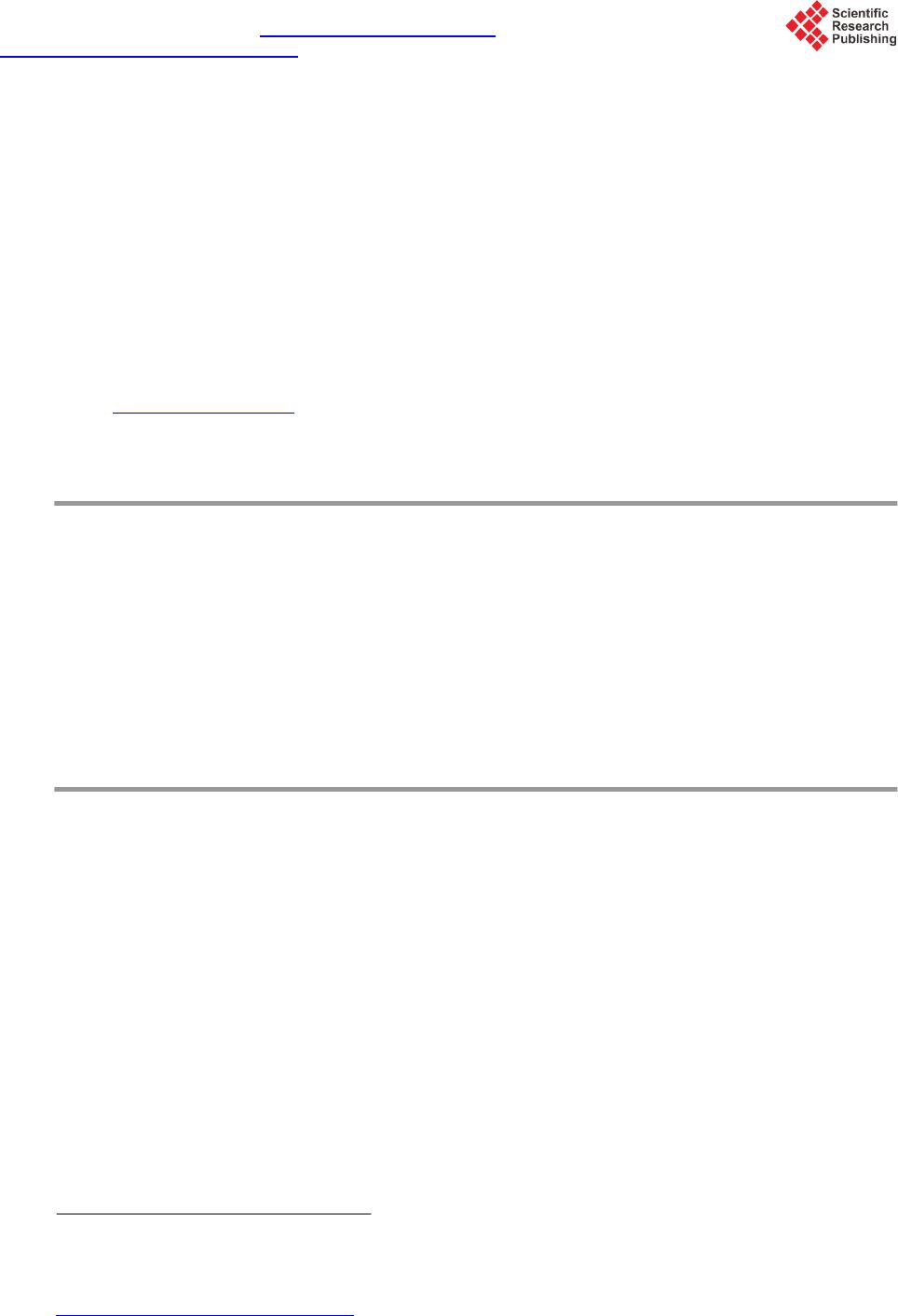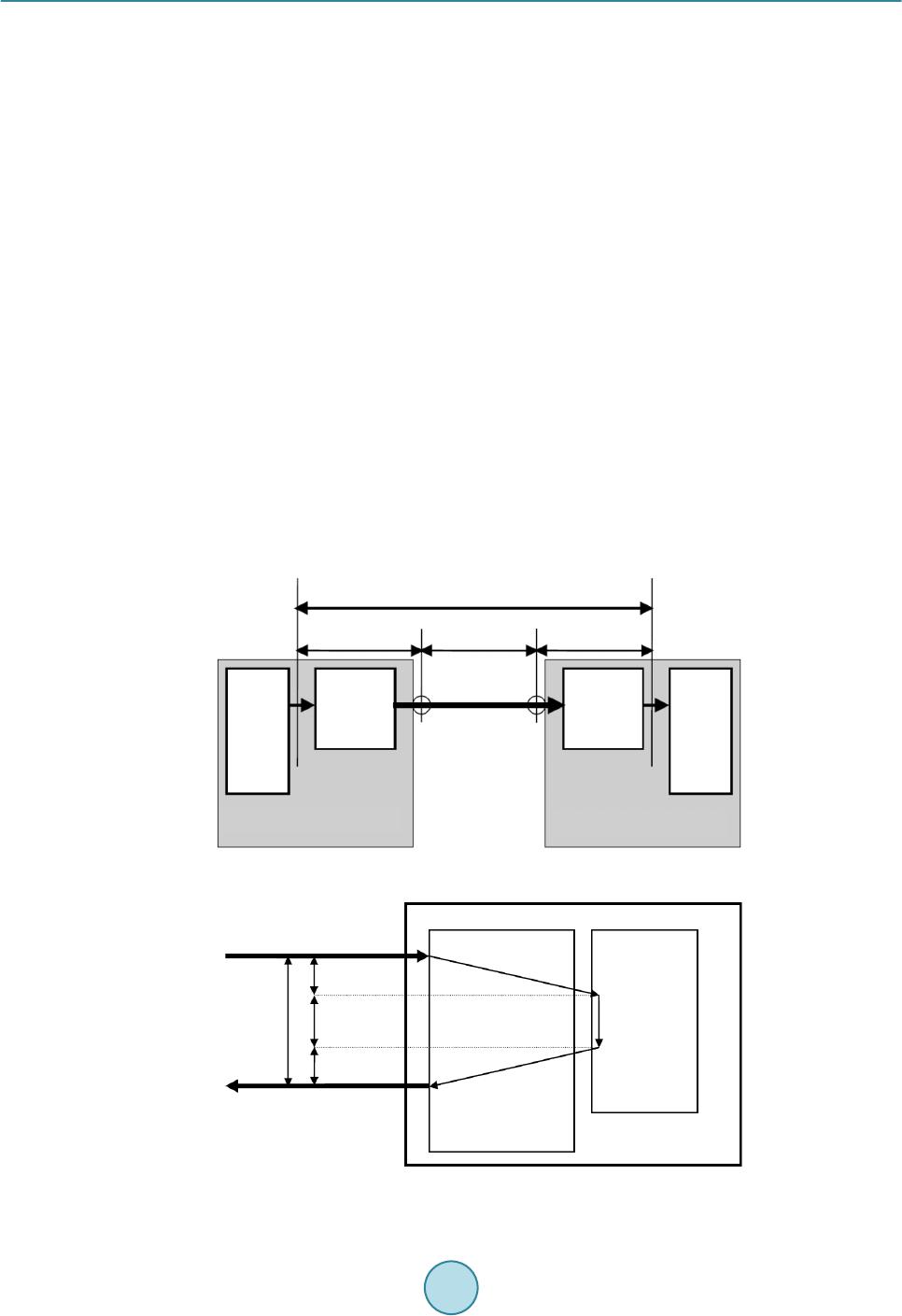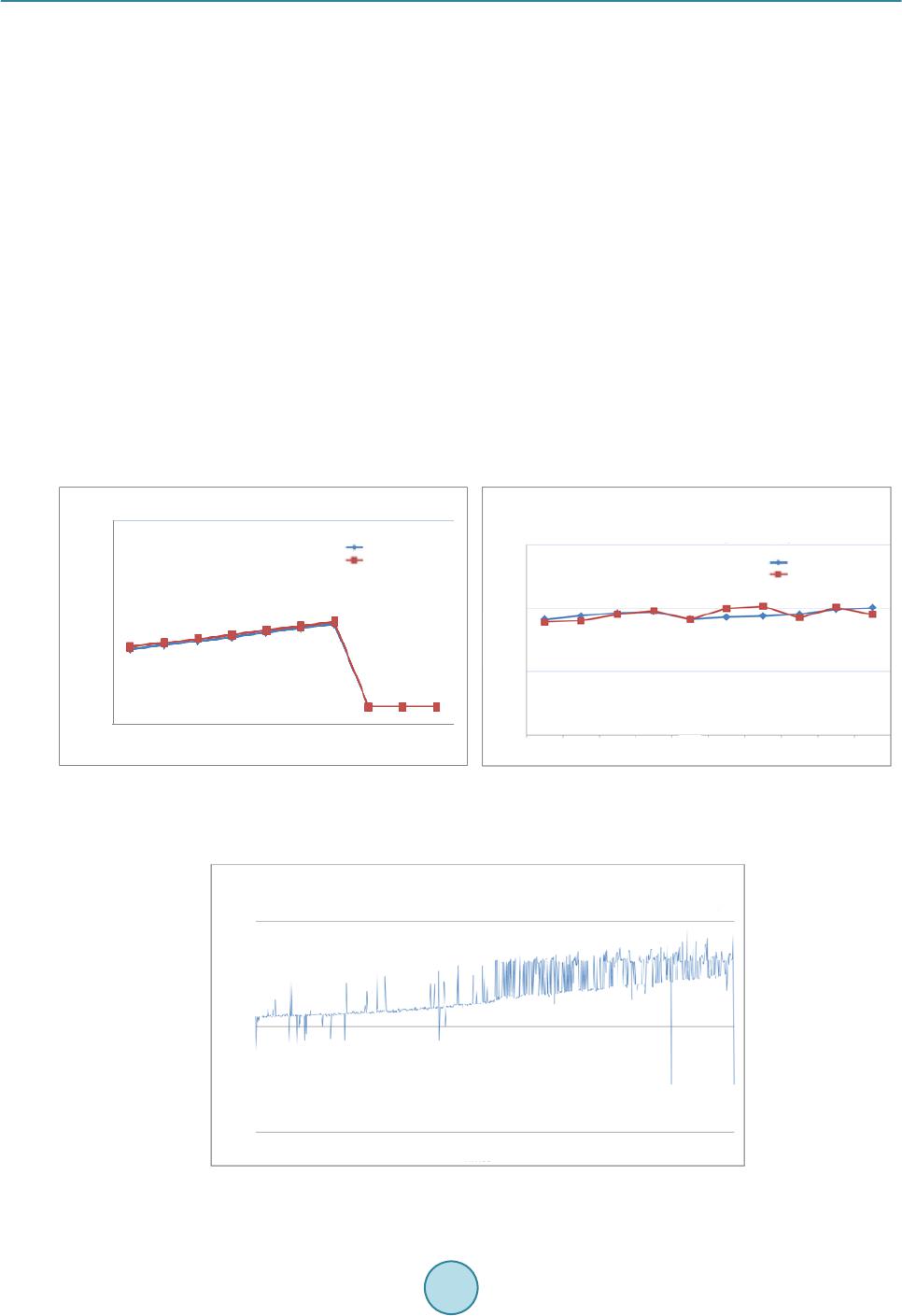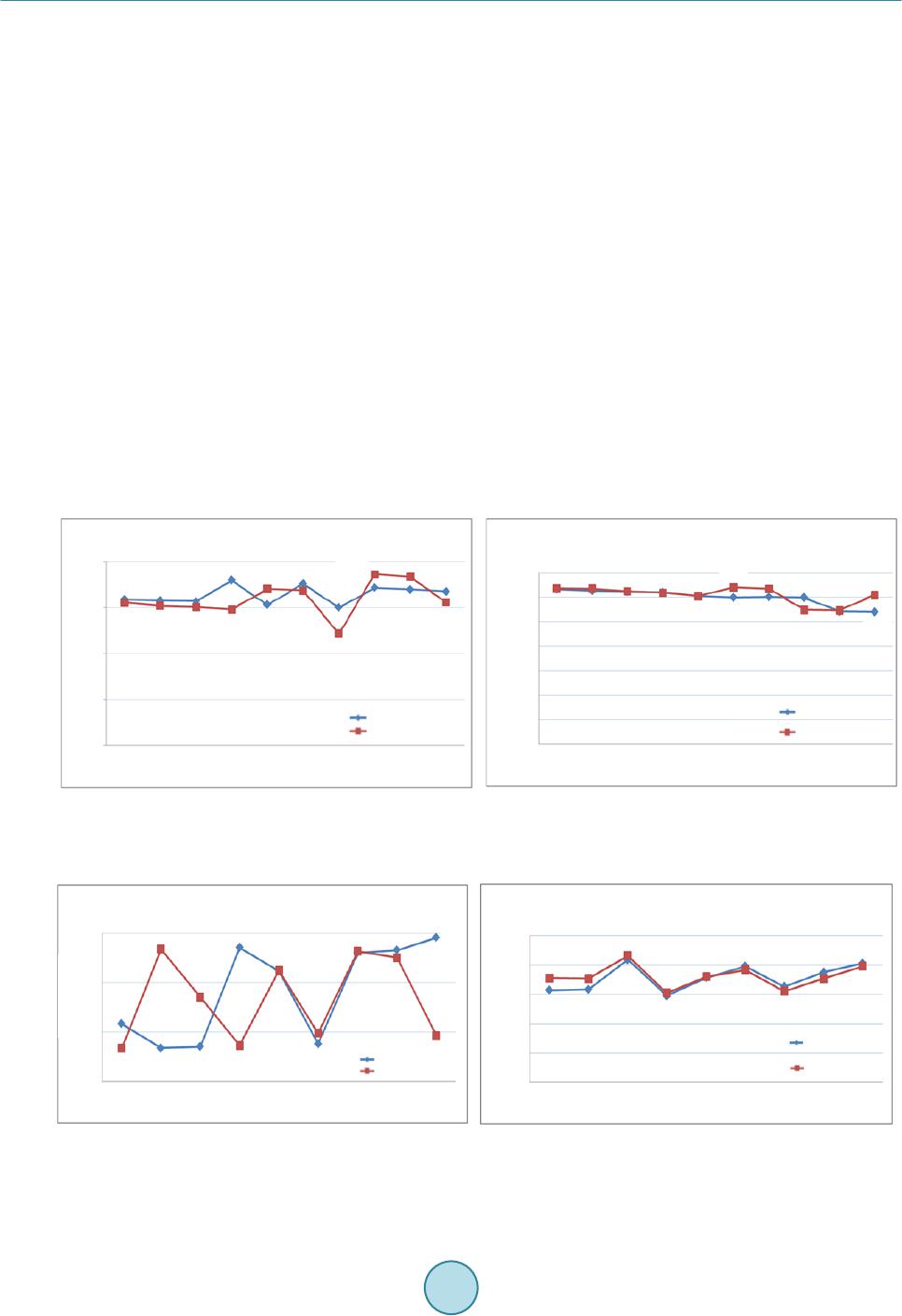 Journal of Power and Energy Engineering, 2015, 3, 289-296 Published Online April 2015 in SciRes. http://www.scirp.org/journal/jpee http://dx.doi.org/10.4236/jpee.2015.34039 How to cite this paper: Yeh, T.-H., Hsu, S.-C., Chung, C.-K. and Lin, M.-S. (2015) Conformance Test for IEDs Based on IEC 61850 Communication Protocol. Journal of Power and Energy Engineering, 3, 289-296. http://dx.doi.org/10.4236/jpee.2015.34039 Conformance Test for IEDs Based on IEC 61850 Communication Protocol Tzu-Han Yeh1, Shih-Che Hsu2*, Che-Kai Chung2, Ming-Shan Lin3 1Master Program in Communication Engineering, Chung Yuan Christian University, Chung-Li, Taiwan 2Electrical Engineering Department, Chung Yuan Christian University, Chung-Li, Taiwan 3Bureau of Standards, Metrology and Inspection (BSMI), Ministry of Economic Affairs, Taiwan, Taipei, Taiwan Email: *anthonyh@cycu.edu.tw Received January 2015 Abstract In this paper, a conformance test platform is built for intelligent electronic devices (IEDs) from different manufacturers based on IEC 61850 communication protocol. A conformance test of time delay of message transmission between two IEDs, made by the same or different manufacturers, is performed. The conformance test platform, as well as the test results provide a helpful reference for IEC 61850 implementation. Keywords IEC 61850, Intelligent Electronic Device, GOOSE, Conformance Test 1. Introduction IEC 61850 communication protocol is widely used in substation automation and is now planned to be extended to feeder automation and distribution energy resource (DER) control. Although intelligent electronic device (IED) manufacturers all declare that their devices comply with the IEC 61850 standards, some problems in con- sistency still remain. Two consistent features are important for IED conformance tests: interoperability and transmission time requirements. Interoperability problems of IED from different manufacturers have been solved in recent years, but the ability of IEDs to meet the time requirements for communication still need to be clarified [1]. In this research, conformance tests for Generic Object Oriented Substation Event (GOOSE) transmission time between two IEDs in bay level are performed. Three IEDs are examined in this test, including two relays (called A-1 for LC interface and A-2 for RJ45 interface) from manufacturer A and one relay (called B-1) from manu- facturer S. The time delays of GOOSE communication between two IEDs are tested under two situations: with- out background traffic and 23 Mbps (5000 packets/second) background traffic. The Ping-Pong method is used to measure the GOOSE round trip time for IEDs. The results are compared to the requirements in IEC 61850-10 conformance testing standards. *Corresponding author.  T.-H. Yeh et al. 2. An Introduction to IEC 61850 Communication Protocol 2.1. IEC 61850 IEC 61850 which is originally designed for communication networks and systems in substation is an interna- tional standard for substation automation, and now extends to power utility automation. Compared to the tradi- tional standard IEC 60870-5-103, IEC 61850 uses object-oriented techniques and Abstract Communication Ser- vice Interface (ACSI) to enhance the consistency between devices, and to realize the seamless connections of IEDs from different manufacturers. IEC 61850 formulates the models and communication interfaces not only for control and protection devices, but also for the primary facilities such as digital CTs, PTs and smart switches, etc. [2]. 2.2. Generic Object-Oriented Substation Event (GOOSE) GOOSE is a fast transmission mechanism of IEC 61850, used for transmitting important real-time signals be- tween IEDs in a substation. Signal transmitting is used to replace the previous adoption of hard-wired connec- tions formerly used in substation communication. GOOSE simplifies the secondary circuit connections of subs- tation, reducing both the construction cost and complexity. GOOSE can realize the smart monitoring of second- ary circuits between devices with self-checking during the communication process [3]. Compared to ISO/OSI seven layer model, the GOOSE message is only composed of four layers minus the session, transport, and net- work layers. The GOOSE message goes through the application layer, presentation layer and then maps to the data link layer, physical layer directly to enhance the reliability and to reduce the transmission delay. GOOSE uses ASN.1/BER in the presentation layer. After GOOSE protocol data unit (PDU) is encoded by ASN.1 in the presentation layer, the packets are mapped to the link and physical layer directly by passing TCP/IP protocol. This method avoids communication stack transmission delays. Mapping the object and service of ACSI to MMS and ISO/IEC 8802-3 through LAN is formulated by IEC 61850-8-1 to realize the data exchange and to allow different manufacturers to implement their functionalities. Then the purpose of interoperability is achieved. 2.3. Transmission Time To ensure the GOOSE message satisfies the real-time transmission requirement, we need to understand the structure of time delay for sending and receiving a GOOSE message. According to IEC 61850-5, the most criti- cal transmission time of GOOSE message must be less than 3 ms, such as message type 1A, 4 and 7B as shown in Table 1 [4]. The GOOSE message time delay structure is shown in Figure 1. ta is the Publisher communica- tion process delay, tb is the network transmission delay, and tc is the Subscriber communication process delay. The total delay (t) is the whole processing time of the GOOSE message that Publisher (PD1) sends to Subscriber (PD2), as t = ta + tb + tc. The affecting factors and components of ta, tb and tc are as follows: Table 1. Time requirements for different types of the IEC 61850 messages. Type of message Time requirements transmission time P1 P2/P3 1A fast messafe (off command) <10 ms <3 ms 1B fast messafe (others) <100 ms <20 ms 2 mediun speedm es s ages <10 0 ms <100 ms 3 low speed messages <50 0 ms <50 0 ms 4 rew data messages <10 ms <3 m 5 file transfer messages Not critical (typically > 1000 ms) 7A command messages with access control <500 ms <50 0 ms 7B command messages with access control (special tasks) <10 ms <3 ms Time requirements-accuracy 6A time synchonization messages (control and rotection) ±1 ms ±0.1 ms 6B time synchonization messages (measurement) ±25 μs ±4 μs/±1μs  T.-H. Yeh et al. is time spent in Publisher and includes data segmentation, message packing, message queueing, and send- ing the message to the GOOSE processor. includes queueing delay of switch and network transmission de- lay. The packet size of a general GOOSE message is between 64 bytes to 1518 bytes. Take the 100 Mbps net- work speed for example, according to the network transmission delay formula, t = (8*message length (bytes))/ transmission speed (bps). Therefore, the network transmission time is between 5.12 μs and 121.44 μs. It is a small proportion in the whole communication delay, so it can be ignored since the main portion is the queueing delay of switch. is the whole time spending in Subscriber, including GOOSE message analysis, data connec- tion and sending notifications to the GOOSE application terminal. GOOSE Ping-Pong is one of the testing me- thods for conformance test. Figure 2 shows the round trip time is the time interval between receiving subscribed GOOSE message and sending published GOOSE message: [5]. The relationships between transmission time and round trip time are as follows: (1) () roundtrip application yx ca tttttt=−=+ + (2) We can get the following equation from Equation (1) and Equation (2): transferroundtrip application b tt tt=−+ (3) Equation (3) shows the time of network transmission delay to be a relatively small compared to the whole communication delay. Therefore, we can get transferroundtrip application tt t= − (4) The time for application logic usually depends on internal scan cycle. For example, the average application Transfer time t = t a + t b + t c Commun i - cation process or Commun i - cation process or Figure 1. Definition of GOOSE transmission time. Commun ic ati on process or Appli c ation Logic to copy value Figure 2. Pin g -Pong method for the round trip time measurement of GOOSE.  T.-H. Yeh et al. time for a 3 ms internal scan cycle is 1.5 ms (50% of scan cycle). According to the IEC 61850-10, the testing of internal scan cycle should not be less than 1000 times. If the average application time = 50% of scan cycle, the maximum application time = 100% of scan cycle and the minimum application time = 0% of scan cycle are as- sumed, the following equations are used for verification. transfer.avgroundtrip.avg application.avgroundtrip.avg Average:scan cycle2tt tt=−=− (5) transfer.maxroundtrip.max application.maxroundtrip.max Maximum:scan cyclett tt=−=− (6) transfer.minroundtrip.min application.minroundtrip.min Minimum :tt tt=−= (7) roundtrip.max roundtrip.minv Measured scan cyclett= − (8) 3. IEC 61850 Conformance Test of IEDs 3.1. The Configuration of Conformance Test Platform The configuration of conformance test platform for IEDs based on IEC 61850 communication protocol is shown in Figure 3. A Desk-top computer installed IED configuration tools of manufacturer A and manufac- turer S is also as a host of Wireshark® package monitoring and as a host of time synchronization (using SNTP). An industrial computer is used for configuring the interoperability software of manufacturer A. Optical Network and Ethernet are used to connect IED A-1 (LC port, manufacturer A), A-2 (RJ45 port, manufacturer A), and B-1 (RJ45 port, manufacturer S) through a switch. Wireshark® is adopted for moni- toring and recording the time delay of a GOOSE message transmission for communication between IEDs [6]. 3.2. Conformance Testing between IEDs of the Same Manufacturer The Publisher is used as the protection relay IED A-1, and A-2 is the Subscriber. Using the over voltage protection function of IED A-1, we input AC 110 V as a breakdown voltage and then it generates and sends the GOOSE message of fault occurred. The transmission time of the GOOSE message is monitored by Wireshark® [7]. Industrial Personal Computer Figure 3. Configuration of conformance test platform.  T.-H. Yeh et al. 1) Testing results of transmission time delay of GOOSE message We measure the GOOSE communication time delay under two situations: without background traffic and with 23 Mbps (5000 packets/sec) background traffic [8]. Figure 4(a) shows that without background traffic, most of the GOOSE communication time delays are less than 1.5 ms in 10 tests of sending fault occurred message and of sending fault removed message from IED A-1 toA-2. The results conform to the requirement of <3 ms defined in Table 1. Figure 4(b) shows that with 23 Mbps (5000 packets/second) background traffic, the average time delay in 10 tests increase significantly (about 0.6 ms) compared to without background traffic, but it still has about a 1 ms time gap compared to the standard (3 ms). The results also conform to the requirement of 20% reserved time delay of 3 ms. 2) Using GOOSE Ping-Pong method for conformance testing The above results are the GOOSE message transmission time delays between IED A-1 and A-2. A GOOSE Ping-Pong method is used for measuring the internal scan cycle of IED. We performed the test 1000 times using GOOSE Ping-Pong method. Wireshark® is adopted to acquire timestamps and to calculate , as shown in Figure 5. We can get , , . According to Equation (5), (6), (7) and (8), transfer.max 3.8402.51.34 mst=−= , transfer. min 0.900.9 mst= −= , measured scan cycle = 3.84 – 0.90 = 2.94ms. According to the regulations in IEC 61850-10, the sum of input and output time delays should be less than 80% of the whole transmission time delay. That means 3 ms * 0.8 = 2.4 ms. The result conforms to this regulation. The measured scan cycle 2.94 ms is close to 2.5 ms, the data (scan cycle) pro- vided by manufacturer A. Time delay between two IEDs of the samemanufacturer Time delay between two IEDs of the same manufac turer (background traffic 23 Mbps) (a) (b) Figure 4. Time delay testing results between two IEDs of the same manufacturer (a) Without background traffic. (b) With background traffic 23 Mbps. 1000 times Goose ping-pong test results (same manufacturer IEDs) Figure 5. Results of 1000 times GOOSE Ping-Pong testing between two IEDs of the same manufacturer.  T.-H. Yeh et al. 3.3. Conformance Testing between IEDs from Different Manufacturers 1) IED A-1 as the Publisher, IED B-1 as the Subscriber a) Testing results of transmission time delay of GOOSE message We measured the time delay for sending GOOSE message from IED A-1 to IED B-1 under two situations: without background traffic and with 5000 packets/sec back-ground traffic. As shown in Figure 6(a), without background traffic, the time delays in 10 tests are between 2.43 to 3.73 ms. This result has exceeded the regulated time of the standard (<3 ms). Figure 6(b) shows the testing results of transmission time delay of GOOSE message from IED A-1 to IED B-1 in 10 tests under 5000 packets/sec back- ground traffic. The range of time delay is between 5.44 and 6.42 ms. The result is almost twice that of the stan- dard regulated time. b) Using GOOSE Ping-Pong method for conformance testing We perform the test 1000 times by using the GOOSE Ping-Pong method. As shown in Figure 8(a), , , and , according to Equation (5), (6), (7), and (8), we can get , and measured scan cycle = 11.18 ms. The max. transmission time is far more than the regulated time (2.4 ms). Also the measured scan cycle (11.18 ms) is much longer compared to the 3 ms provided by manufacturer S. 2) IED B-1 as the Publisher, IEDA-2 as the Subscriber a) Testing results of transmission time delay of GOOSE message We measured the time delay for sending the GOOSE message from IED B-1 to IED A-2 under two situations: without background traffic and with 5000 packets/sec background traffic. As shown in Figure 7(a), without background traffic, the time delays in 10 tests are between 0.67 to 2.91 ms. This result is close to the requirement Time delay of GOOSE message from IED A-1 to IED B-1 Time delay of GOOSE message from IED A-1 to IED B-1 (with 5000 background packets) (a) (b) Figure 6. Testing results of time delay of GOOSE message from IED A-1 to IED B-1. (a) Without background traffic); (b) With background traffic 23 Mbps. Time delay of GOOSE message from IED B-1 to IED A-2 Time delay of GOOSE message from IED B-1 to IED A-2 (with 5000 background packets) (a) (b) Figure 7. Test results of time delay of GOOSE message from IED B-1 to IED A-2. (a) Without background traffic; (b) With background traffic.  T.-H. Yeh et al. 1000 times GOOSE ping-pong test results (from IED A-1 to IED B-1) 1000 times GOOSE ping-pong test results (from IED B-1 to IED A-2) (a) (b) Figure 8. Results of 1000 times GOOSE ping-pong test. (a) From IED A-1 to IED B-1; (b) From IED B-1 to IED A-2. of the standard (<3 ms).As show in Figure 7(b), the range of transmission time delay of the GOOSE message from IED B-1 to IED A-2 in 10 tests under 5000 packets/sec background traffic is between 2.95 and 4.32 ms. b) Using GOOSE Ping-Pong method for conformance testing The results shown in Figure 8(b) are for round trip time of IED A-2 by using the GOOSE Ping-Pong method to perform the test 1000 times, , , and . Accord- ing to Equation (5), (6), (7) and (8), we can get , and measured scan cycle = 3.49 ms.The max. transmission time conforms to the regulated time (2.4 ms). The measured scan cycle = 3.49 ms is longer than the data (2.5 ms) provided by manufacturer A. 4. Conclusions In this research, we tested the conformance of the GOOSE message transmission time between different manu- facturers’ IEDs based on IEC 61850-10 standard, and verified the internal scan cycle of IED using the GOOSE Ping-Pong method. The results are concluded as follows: In the case of conformance testing between IEDs of the same manufacturer, for the testing results of trans- mission time delay of the GOOSE message, regardless of without background traffic, or with 23 Mbps (5000 packets/sec) background traffic, both of the results conform to the requirements of IEC 61850-10 (<3 ms). For the conformance test using the GOOSE Ping-Pong method, the max. transmission time (1.34 ms) con- forms to the regulated time (2.4 ms), and the time of the measured scan cycle (2.94 ms) is close to the data (2.5 ms) provided by manufacturer. In the case of conformance testing between IEDs from different manufacturers: if IED A-1 is the Publisher and IED B-1 is the Subscriber, for the testing results of transmission time delay of the GOOSE message, the result exceeds the regulated time of the standard (<3 ms) without background traffic, and the result is almost double the regulated time of the standard with 23 Mbps background traffic. For conformance testing, the max. transmission time (9.72 ms) is far more than the regulated time (2.4 ms) and the measured scan cycle (11.18 ms) is much longer than 3 ms provided by manufacturer. If IED B-1 is the Publisher and IED A-2 is the Subscriber, the result is close to the requirement of the stan- dard (<3 ms) for the transmission time delay without background traffic, and the result exceeds the regulated time of the standard with 23 Mbps background traffic. For conformance testing, the max. transmission time (1.5 ms) conforms to the regulated time (2.4 ms), but the measured scan cycle (3.49 ms) is longer than the data (2.5 ms) provided by the manufacturer. The test platform has been built and tested successfully. Furthermore, an IEC 61850 conformance test plat- form that meets industrial and academic requirements can be established based on this platform in the future. Acknowledgements This project was sponsored by BSMI under Contract No. 1D151031201-117. The authors thank the research group from BSMI for their technical support.  T.-H. Yeh et al. References [1] Li, X.-B. and Han, M.-F. (2009) Analysis and Realization of GOOSE Real-Time Communication. Journal of Power System Protection and Control, 37. [2] Hung, Y.-L. (20 10) Apply IEC 61850 Based IED to Smart Grid Protection. Master Thesis, National Taiwan University of Science and Technology. [3] Hakala-Ranta, A., Rintamaki, O. and Stark, J. (2009) Utilizing Possibilities of IEC61850 and GOOSE. CIRED 2009, Paper 0741. [4] IEC Standard 61850-5 (2013) Communication Requirements for Functions and Device Models, ed. 2.2. [5] Sch immel, R. and Xu, T. (2012) Test Procedures for GOOSE Performance According to IEC 61850-5 and IEC 61850-10. KEMA Nederland B.V. [6] Ke, Y.-K. (2013) The Study on GOOSE Functionalities of IEC 6180 Communication Protocol. Journal of Relay Asso- ciation, 37, 33-41. [7] IEC Standard 61850-10 (2012 ) Conformance Testing, ed. 2.0. [8] Man assero Jr ., G., Pellini, E.L. , Senger, E.C. and Nakagomi, R.M. (2013) IEC61 850 -Based Systems-Functional Test- ing and Interoperability Issues. IEEE Transactions on Industrial Informatics, 9, 1436-14 44. http://dx.doi.org/10.1109/TII.2012.2217977
|